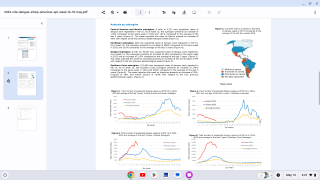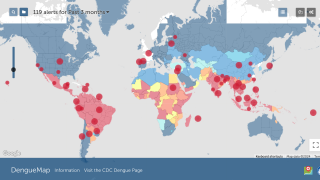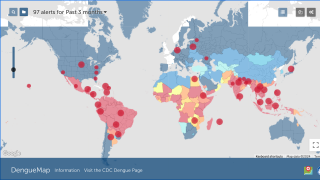Infectious Mosquitoes Have Their Day Too!

Mention mosquitoes, and you can’t help but think about the alarming number of infectious diseases reported around the world each year.
Mosquitoes are often known for transmitting debilitating diseases including malaria, dengue, and Zika.
Specifically, female mosquitoes are considered the world’s deadliest creatures responsible for causing about 1 million fatalities around the world each year.
There are more than 3,000 species of mosquitoes, but just 3 are primarily responsible for the spread of human diseases.
The Anopheles mosquitoes are the only species known to carry malaria. They also transmit filariasis (also called elephantiasis) and encephalitis.
Culex mosquitoes carry encephalitis, filariasis, and the West Nile virus.
And Aedes mosquitoes, of which the voracious Asian tiger is a member, carry yellow fever, dengue, and encephalitis.
But, on August 20th, these sensory-intelligent creatures are celebrated on World Mosquito Day.
Here are some fun facts about mosquitoes based on a July 18, 2019, University of Waterloo study:
- Mosquitoes can smell you
- Mosquitoes are attracted to human smells, especially carbon dioxide that we breathe out. This helps explains why mosquitoes can find people from 100 metres away.
- Type O-blood type is their favorite
- When exposed to all kinds of blood groups, there’s a very good chance that mosquitoes will choose Type O blood over everything else.
- Mosquitoes have a poor eye vision
- Both olfactory and visual cues go hand-in-hand to enable mosquitoes to locate their hosts. The critters have simple, photosensitive eyes, called ‘ocelli’ on the top of their heads enabling them to see in all directions, but their vision is highly fragmented and less-focused.
- Drinking beer makes you more attractive to mosquitoes
- Since mosquitoes can sniff the CO2 in your breath, they are all the more drawn to you if you’re working out, or even drunk. Essentially, people with high resting metabolic rate such as obese individuals are their better targets.
- Mosquitoes follow certain visual cues
- Mosquitoes are attracted to various visual stimuli. They tend to fly faster in the direction of moving objects. Thus, repeated bodily movements like tapping your foot can attract them.
- Mosquitoes do not like wind
- No wonder it doesn’t take much to blow mosquitoes away. An average mosquito weighs just 2.5 milligrams.
The US Centers for Disease Control and Prevention (CDC), has updated the estimated range maps for Ae. aegypti and Ae. albopictus mosquitoes by using a model that predicts possible geographic ranges in the contiguous United States.
Ae. aegypti mosquitoes are more likely than Ae. albopictus mosquitoes to spread viruses like Zika, dengue, chikungunya and other viruses. This is because the Ae. aegypti mosquitoes live near and prefer to feed on people.
These CDC maps do not represent the actual risk for the spread of disease.
The best way to prevent a disease from a mosquito bite is to take steps to prevent mosquito bites, such as:
- Wear long-sleeved shirts and long pants.
- Stay in places with air conditioning and use window and door screens to keep mosquitoes outside.
- Use Environmental Protection Agency-registered insect repellent.
- Treat clothing with permethrin or purchase permethrin-treated items.
For more information about how to prevent mosquito bites, see the CDC’s Mosquito Bite Prevention.
Our Trust Standards: Medical Advisory Committee
- Visual-Olfactory Integration in the Human Disease Vector Mosquito Aedes aegypti
- Mosquitoes Use Vision to Associate Odor Plumes with Thermal Targets
- Olfactory learning and chemical ecology of olfaction in disease vector mosquitoes: a life history perspective
- Live calcium imaging of Aedes aegypti neuronal tissues reveals differential importance of chemosensory systems for life-history
- CDC: Estimated potential range of Aedes aegypti and Aedes albopictus in the United States, 2017
- World Mosquito Day: This Is How Mosquitoes Find You And Decide To Bite You!

























